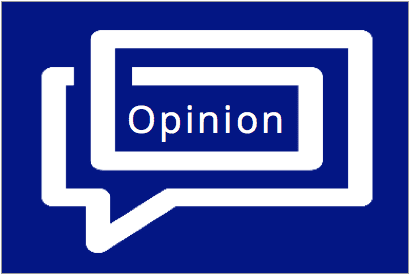The recent anti-Mexican chalking across campus does not constitute a UCSD crisis. The same graffiti appeared at UC Santa Barbara and has popped up around the country. It is a coordinated prank coming out of the Trump camp with a Trump son and the campaign media director in charge. It feeds the conservatives’ message about “spoiled millennials” and “political correctness.”
The real crisis at UCSD is the fact that six years after the Compton Cookout, the administration is still detached from student of color experiences, still repeating tired bromides about free speech, and still relying on canned boilerplate PR responses to incidents that make student of color anxieties on campus spill over. The administration has had six years and has done almost nothing to improve its “rapid response” capabilities.
The “Community Conversations” series planned for this week is similar to what the administration did after the Cookout and hangman’s noose in Geisel Library — an attempt to psychologize the issues and focus on individual “trauma.” Smart students back then did not appreciate it and walked out of the official administration event in Price Center West. Smart students now won’t fall for it either.
We are well aware of all the complications over the last few years — the Vice Chancellor for Equity, Diversity and Inclusion fiasco with a highly paid vice chancellor bolting after one year, the increased number of international students and the resource centers many of us fought for becoming mere extensions of administrative control.
But six years is a long time. Some of us have been waiting longer than that for a comprehensive strategic plan for transforming the toxic campus climate. In fact, working-class students of color have been waiting over 50 years.
The bravado coming out of the VC-EDI office is no substitute for real action. UCSD claims it will admit more Latino/a and Black students next year (a possibility given that Sacramento has put pressure on the University of California to cap out-of-state numbers and increase California residents). But if UCSD administrators do not move quickly, won’t these new students, to sample Dr. King, be “integrating into a burning house?”








classic rando • Apr 19, 2016 at 3:18 pm
The real crisis at UCSD is the completely directionless and heavy-handed approach to solving the problem of racist attitudes. Yes, people are going to be racist and say racist things. No, it’s not the university’s place or obligation to police what they say or how they say it. After the Compton Cookout, the typical kneejerk reaction was to institute the DEI curriculum, in which professors lectured to a campus (the majority of which is people of color) about how they were being oppressed. Students who had come to UCSD to study engineering, art, or biology got forced to take a class that they didn’t want to take and had to pay for. The administration installed staff to manage the program and to institute other “diversity” measures, but at what cost? It is both tragic and amusing that the same students who march on Library Walk to protest the ballooning cost of administration on campus are the same ones who demand more diversity awareness, more this, more that. You can’t have it both ways.
For his part, Prof. Mariscal is quick to criticize the administration’s efforts, but what changes does he propose? What is this “real action” he speaks of? One hopes that it’s not another bevy of DEI classes to waste everyone’s time. Enrolling more Latinos/African Americans? Based on what criteria? The student body is bitter enough about affirmative action-type policies without more of it being forced down their throats. No one should think for a second that pursuing similar policies is likely to end racist sentiment. If anything, it will amplify it.
There are two points that should be made, the latter of which Prof. Mariscal vaguely alluded to.
University, in which students pay thousands of dollars and plunge themselves into debt to finish their degrees on time and start their professional careers, is absolutely not the setting for diversity education. Diversity education should be a mandatory part of elementary and high school education. While learning about American history and social studies, students should be exposed to some of the problems that people of color and (insert marginalized group here) face. The younger you are, the more impressionable and idealistic you are, and the more likely you are to grow up with the right kind of ethos.
The second point is that if you allow yourself to be traumatized by chalk, you’re not only confirming the stereotypes being put forth by the Trump camp, but also allowing yourself to develop into a weak person. One should consider that a student who breaks into conniptions at the sight of “Make Mexico Pay” is hardly going to become the next Dr. King, or the leader of anything for that matter,